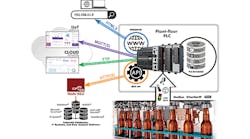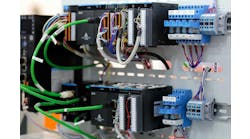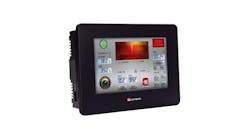Damon Purvis is PLC product manager at AutomationDirect. He has more than 22 years of industrial automation experience. Previous roles have included designing and deploying automated solutions in a variety of industries and managing product development of manufacturing data management and business intelligence applications.
What have been the biggest improvements to machine-controls technology in the past five years?
Damon Purvis, PLC product manager at AutomationDirect: With the improved communication connectivity offered by PLCs, the adoption of IT-centric networking and security provisions has become paramount to defend against cyberattacks. Traditional PLCs often used some proprietary networks/protocols and operated as islands, so they were less of a target. The adoption of Ethernet and open protocols such has MQTT have made interoperability between PLC vendors, sensors, devices and IT systems much more available and transparent, therefore demanding better security measures. Increased processing power has opened the door for PLCs/PACs to handle multiple roles in the control system. They now support many programming languages, protocols and embedded Web services, and they have the processing necessary to support encryption and other security.
Also read: 8 tips for PLC design
How has machine-controls technology benefitted from remote monitoring and connectivity?
Damon Purvis, PLC product manager at AutomationDirect: One major benefit we see with improved connectivity and remote monitoring is that machine builders are better able to remain involved and support their clients with the operation of a piece of equipment through its entire lifecycle. Remote monitoring has always held the promise of reducing downtime, by getting the right people engaged at the right time. Now OEMs can access performance and diagnostic data in conjunction with their clients so they can optimize operation, and as we see advances in machine learning/artificial intelligence (ML/AI), this remote connectivity of machines with IT systems will enable advanced activities like predictive maintenance (Figure 1).
When will machine controls become IT-friendly enough that engineers are no longer required for installation and operation?
Damon Purvis, PLC product manager at AutomationDirect: We are close to a future where machine control becomes IT-friendly enough to operate without extremely specialized knowledge. As machine controls increasingly incorporate IT-friendly networks and programming languages, it will be much easier for both OT and IT personnel to troubleshoot and operate systems. Providing this same ease for installation is a bit further away, because there is more involved with designing and starting up a complex machine control system. A typical machine could have discrete control, process control and high-precision motion control, which currently requires specialized skills to start up.
Tell us about your company’s state-of-the-art machine-controls technology for discrete manufacturing.
Damon Purvis, PLC product manager at AutomationDirect: The AutomationDirect Do-more BRX Series stackable micro brick PLCs continue to add functionality fusing traditional machine control with IT enabling technology. OT/IT convergence enabled by BRX PLCs lets end users and OEMs control machines with the same reliability they have always expected, while adding easy IIoT access to their data.







